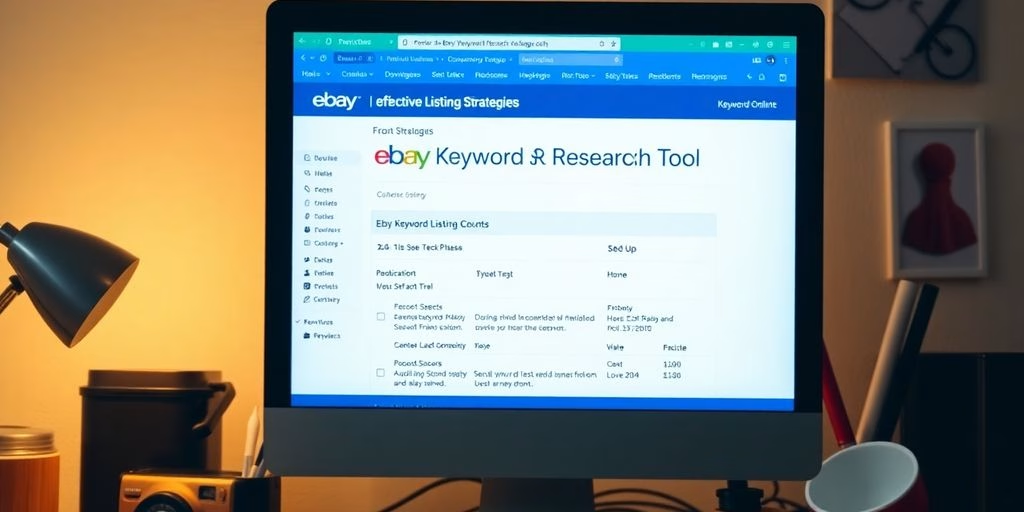In the dynamic landscape of marketing, understanding your target audience is the cornerstone of creating compelling campaigns that resonate and convert. This article delves into the strategies that marketers can employ to decode the audience matrix, craft persuasive messages, analyze the competition, and navigate the omni-channel landscape effectively. By grasping these concepts, businesses can ensure their marketing efforts are not just heard, but truly listened to and acted upon by the right people.
Table of Contents
ToggleKey Takeaways
- Identify and understand your target audience through data-driven research to craft tailored and impactful marketing messages.
- Develop a strong value proposition that clearly communicates the unique benefits of your product or service to your audience.
- Employ segmentation and personalization strategies to enhance engagement and drive better marketing results.
- Conduct a thorough competitive analysis to uncover market gaps and learn from competitors’ successes and mistakes.
- Adopt a multi-channel approach, integrating both online and offline channels, to reach your audience effectively and optimize your marketing strategy through continuous feedback.
Decoding the Audience Matrix: Who’s Really Listening?

Bullseye Targeting: Separating Market from Audience
Understanding the difference between your target market and your target audience is like knowing the difference between a forest and the specific type of tree you’re looking for. Your target market is the entire forest, a broad group of potential consumers, whereas your target audience is the tree, a more defined segment of that market likely to be interested in your product.
- Identify the demographics: Age, gender, income level, etc.
- Understand their behavior: Shopping habits, online activity, brand interactions
- Recognize their needs and preferences: What are they seeking in a product or service?
- Engage with personalization: Tailor your messages to resonate with your audience
By zeroing in on your target audience, you’re not just throwing darts in the dark; you’re strategically aiming for the bullseye with every campaign. This precision ultimately leads to a more efficient use of your marketing budget and a higher ROI.
Remember, personalization is key. Utilizing data analytics to understand your audience’s preferences allows you to craft messages that feel bespoke. This approach doesn’t just improve ad targeting; it transforms how your audience perceives your brand.
The Art of Segmentation: Crafting Personalized Messages
In the grand theater of marketing, segmentation is the spotlight that shines on the most receptive members of your audience. It’s about slicing the market pie into digestible pieces, ensuring that your message is savored by the right taste buds. Personalization is the secret sauce that makes each slice uniquely appealing, transforming potential interest into loyal patronage.
- Know your bullseye so you can target them with precision.
- Embrace a multi-channel approach, meeting your audience on their turf.
- Leverage behavioral targeting to reach the right people based on their online actions and interests.
The key to effective segmentation is not just in knowing who your audience is, but also in understanding their preferences and behaviors. This knowledge allows you to craft personalized information or advertising that resonates on a deeper level.
Another nifty trick is to use surveys to tap into the psyche of your audience. By understanding their interests and preferences, you can create campaigns that hit the mark every time. After all, in the game of marketing, the one who knows the audience best, wins.
The Multi-Channel Maze: Navigating the Best Path to Your Audience
In the labyrinth of modern marketing, finding the best path to your audience is akin to a high-stakes game of snakes and ladders. Every channel offers a unique opportunity to connect, but without a map, you’re just as likely to slide down a serpent as to climb a ladder. The key is not just to be everywhere, but to be strategically everywhere.
- Understand the nuances of each platform.
- Tailor your message to fit the medium.
- Measure, learn, and adapt.
The goal is not to bombard your audience with messages, but to craft targeted messaging and personalized offers that resonate deeply.
Remember, a multi-channel approach is not about shouting louder; it’s about speaking smarter. By leveraging the power of behavioral targeting, you can reach the right people based on their online actions and interests. And don’t forget, offline channels still hold a treasure trove of engagement opportunities. It’s a multi-channel world out there—navigate it with precision and creativity.
Crafting Your Message: The Language of Persuasion

The Power of the Value Proposition: Why You?
At the heart of every successful marketing campaign lies a compelling value proposition. Your value proposition is your battle cry; it’s the declaration of what makes your offering unique and why customers should flock to your banner instead of your competitors’. Crafting this key message is not about listing features; it’s about painting a picture of the undeniable benefits that only you can provide.
A great value proposition is the cornerstone of any business’s success. It’s the difference between blending in and standing out, between a potential customer scrolling past or stopping to engage.
To distill your value proposition, consider these points:
- Identify the core benefits your product or service offers.
- Understand your audience’s pain points and how you alleviate them.
- Communicate how your brand aligns with customer values and beliefs.
- Be specific and clear, avoiding jargon that obscures your message.
Remember, your value proposition should be a beacon, guiding the lost ships of your potential customers to the safe harbor of your brand. It’s not just about what you sell, but the story of why it matters.
The Psychology of Persuasion: Crafting Messages that Stick
In the realm of marketing, persuasion is the art of influence. It’s not about coercion; it’s about crafting messages that resonate, that transform passive readers into active participants. To achieve this, one must delve into the psychographics of the audience, understanding their lifestyle, values, and interests.
- Understand the pain points and desires of your audience to create messages that feel personal and compelling.
- Embrace a multi-channel approach, ensuring your message is where your audience naturally congregates.
- Leverage behavioral targeting to deliver content that aligns with users’ online actions and interests, enhancing the likelihood of engagement.
By focusing on the preferences and behaviors of your target audience, you can craft marketing strategies that not only capture attention but also drive meaningful action.
Remember, the goal is to create targeted messaging and personalized offers that resonate deeply with your audience. This isn’t just about increasing ROI; it’s about building a connection that lasts.
Speak Their Language: Using Demographics to Your Advantage
In the quest to speak their language, understanding the demographics of your audience is like having a Rosetta Stone for marketing. Demographics provide a framework for crafting messages that resonate on a personal level. But it’s not just about age or location; it’s about diving deep into the psyche of your market segment.
- Identify Unmet Needs: Use demographic insights to pinpoint gaps in the market. This is where your product can shine by addressing these specific needs.
- Behavioral Insights: Combine demographic data with behavioral patterns to predict how different groups might respond to your marketing efforts.
- Visual Psychology: Master the art of using colors and imagery that appeal to your target demographic, enhancing the effectiveness of display advertising.
By personifying your audience, you can create targeted messaging that not only speaks to them but also speaks for them. This approach transforms data into actionable insights, allowing for a marketing strategy that is both engaging and empathetic.
Remember, the goal is to weave demographic data into the fabric of your marketing narrative. It’s not just about who they are, but also about what they aspire to be. Testing and refining your approach is a continuous process, ensuring that your message stays relevant and persuasive.
The Spyglass Approach: Competitive Analysis for the Win

Know Thy Enemy: Learning from Competitors’ Triumphs and Blunders
In the grand chessboard of business, knowing your competitors is as crucial as knowing your own moves. It’s not about copying their strategies, but rather, internalizing the lessons they provide. Here’s how to conduct a competitor analysis that’s both insightful and actionable:
- Innovate internally, drawing inspiration from competitors’ successes without mere imitation.
- Stay permeable to external innovation, adapting swiftly in a VUCA world.
- Employ analytical tools for a systematic approach, avoiding the pitfalls of guesswork.
The insights you gain will allow you to learn from your competitors’ successes or capitalize on their failures.
Remember, crafting a unique visual brand identity is not just about aesthetics; it’s about understanding consumer behavior and differentiating from competitors. By analyzing their content strategy and brand voice, you can identify market gaps and position your brand as the ideal solution for your target audience.
Finding the Chinks in the Armor: Identifying Market Gaps
In the grand chess game of marketing, identifying market gaps is like finding the perfect move that puts your competitors in check. Chances are you’re not the first on the scene, so a keen eye on the competition can reveal untapped opportunities. By analyzing who your competitors target, you can differentiate your brand and position yourself as the go-to solution for your ideal customer.
Transform data into action. These detailed profiles go beyond demographics, weaving a rich tapestry of traits that bring your audience to life.
For instance, launching a new athletic shoe line? Scrutinize your competitors’ marketing strategies. Are they all about comfort, style, or performance? Pinpointing their focus allows you to craft a message that spotlights your unique selling points. Here’s how to turn the tables:
- Conduct surveys and interviews to understand customer demographics, preferences, and behaviors.
- Use analytics to gather data and tailor marketing messages that resonate.
- Perform a competitive analysis to assess strengths, weaknesses, and customer reviews.
By mastering these steps, you can carve a niche in the market that your competitors have overlooked, offering a product or service that not only meets needs but also exceeds expectations.
Benchmarking for Success: Setting Goals with Competitive Insights
In the grand chess game of marketing, benchmarking is your power move. It’s not just about keeping up with the Joneses; it’s about leapfrogging over them with a pogo stick. By setting goals based on competitive insights, you’re essentially peeking into your rivals’ playbook and tweaking your strategy to capitalize on their weaknesses.
- First, identify the key performance indicators (KPIs) that matter most to your business. Is it website traffic, conversion rate, or social media engagement?
- Next, get your hands on data. Lots of it. Analyze your competitors’ online presence, content frequency, and customer interactions.
- Then, ask the hard questions. Where are they excelling? Where do they stumble? And most importantly, how can you do it better?
By understanding what the competition is doing well (and where they’re falling short), you can make informed decisions about how to differentiate your offering and communicate that differentiation to your target audience.
Remember, competitive benchmarking isn’t a one-and-done deal. It’s an ongoing process of measuring, optimizing, and outsmarting. Keep your eyes peeled and your strategy nimble, and you’ll be setting the pace, not just keeping it.
Everywhere at Once, but Not All Over the Place

The Digital Cocktail: Mixing the Right Online Channels
Stirring up the perfect digital cocktail requires a shrewd mixologist. It’s about blending the right online channels to create a concoction that’s both potent and palatable to your audience. Choosing your marketing channels wisely is the first step to ensuring your message doesn’t just add to the digital noise.
- Determine where your audience spends their time and what channels they resonate with.
- Develop a content strategy that serves up targeted messaging and personalized offers.
- Embrace a multi-channel approach, but don’t just throw everything at the wall to see what sticks.
The key to a successful digital strategy is not just being present on multiple channels, but being impactful where it matters most.
Remember, every platform has its own flavor and audience. For instance, targeting a younger demographic might call for a splash of Instagram or a dash of TikTok, while an older crowd might prefer the full-bodied taste of email marketing. It’s all about finding the right balance to enhance your online presence and drive engagement.
Offline is Not Off-Limits: Integrating Traditional Media
In the age of digital dominance, it’s easy to forget the power of traditional media. Yet, the savvy marketer knows that offline channels are far from obsolete. They offer a tangible touchpoint in an increasingly virtual world, and when integrated with online efforts, they can significantly amplify your brand’s presence.
- Don’t be a one-trick pony; embrace the multi-channel approach.
- Leverage behavioral targeting for offline campaigns as well.
- Remember, every channel has its unique strengths—use them wisely.
Traditional media, when used creatively, can turn the tables in your favor, making your brand a memorable part of your audience’s daily life.
Understanding the nuances of your audience’s media consumption is crucial. For instance, if targeting a younger demographic, social media might be your go-to. But for an older audience, direct mail could strike a chord. It’s all about finding the right mix and mastering cross-border commerce to create omnichannel experiences that engage seamlessly.
Analytics and Adaptation: The Feedback Loop of Channel Strategy
In the whirlwind of marketing channels, analytics serve as your compass. They guide you through the multi-channel maze, ensuring that strategic ad placement and format experimentation lead to the treasure trove of optimized customer experiences. A/B testing and data-driven decisions are the cornerstones of this journey, enhancing ad success and striking the right revenue balance.
- Launch campaigns and track performance against objectives.
- Adjust strategies based on performance data for continuous improvement.
- Involve your team for diverse insights and ideas.
The key to mastering the omnichannel conundrum lies not just in being everywhere at once, but in being smart about where and how you appear.
Remember, the marketing landscape is ever-changing. What works today may need a tweak tomorrow. Stay ahead by continuously analyzing, testing, and iterating. Your strategy should be as dynamic as the market itself, evolving with trends, consumer behavior, and technological advancements.
Navigating the omni-channel landscape can be like trying to be everywhere at once without losing your brand’s unique voice. It’s a delicate balance that requires strategic finesse and technological savvy. If you’re grappling with the omni-channel conundrum, we’re here to help. Contact us now and let’s collaborate to create a seamless brand experience across all platforms. Together, we can ensure that your brand is everywhere it needs to be, without being all over the place. Reach out now and take the first step towards omni-channel mastery.
Conclusion: Hitting the Bullseye in Marketing
In the archery of advertising, understanding your target audience is akin to knowing the wind conditions—crucial for hitting the bullseye. We’ve journeyed through the landscape of demographics, dived into the psychology of psychographics, and navigated the multi-channel maze. Remember, a one-size-fits-all approach in marketing is about as effective as a screen door on a submarine.
Personalization is the name of the game, and precision targeting is your winning move. Keep your eye on the data, your ear to the ground, and your content as tailored as a bespoke suit at a high-stakes poker game. With these strategies in your quiver, you’re not just ready to play the game—you’re set to win it. So go forth, aim with insight, and let your marketing arrows fly true!
FAQs
What is the importance of understanding your target audience in marketing?
Understanding your target audience is crucial as it allows you to tailor your marketing messages and campaigns to the specific needs, preferences, and behaviors of your customers. This leads to more effective communication, higher engagement, and better conversion rates.
How do you identify your target audience?
To identify your target audience, conduct surveys and interviews, utilize analytics to gather demographic, preference, and behavior data, and analyze online search data. This data-driven approach helps in understanding who your customers are and what motivates them.
What is the difference between target market and target audience?
The target market refers to the entire group of people who might be interested in your product or service, while the target audience is the specific subset of the target market that you aim your marketing efforts towards, often defined by more precise criteria.
Why is segmentation important in marketing?
Segmentation is important because it allows marketers to divide a broad target market into smaller, more manageable groups with similar characteristics. This enables the creation of personalized marketing messages that resonate more deeply with each segment.
What role does competitive analysis play in understanding the target audience?
Competitive analysis helps you understand your competitors’ strategies, strengths, and weaknesses, which can reveal insights into customer preferences and gaps in the market. This knowledge can inform your approach to better meet the needs of your target audience.
How can a multi-channel approach enhance marketing efforts?
A multi-channel approach allows businesses to reach their target audience through various platforms and mediums, maximizing reach and engagement. By being present on the channels that your audience frequents, you increase the chances of connecting with potential customers.









































































































